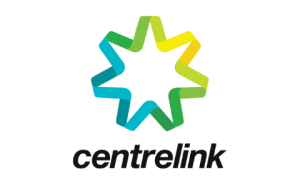Key events in September 2022
- Persistent high inflation, aggressive interest rate rises from the major central banks as well as the tragic Russia – Ukraine conflict continue to cast a shadow over global financial markets.
- Consumer inflation has surged to 10% in Europe and remains above 8% in the US. According to the new monthly measure, Australia’s annual inflation is 6.8% in the year to August.
- Central banks continue to aggressively raise interest rates to reduce inflation. The Reserve Bank of Australia (RBA) raised the interest rate by 0.5% in September and 0.25% in October. Both the European and US central banks raised their policy interest rate by 0.75% in September.
- Global shares fell sharply in September. Wall Street’s benchmark S&P 500 Index declined by more than 9%. The primary catalysts for weaker US shares were high inflation and another interest rate rise by the US Federal Reserve (Fed). Fed Chair Jerome Powell warned that the central bank is “strongly resolved” to lower inflation and “will keep at it until the job is done”.
- Australian shares proved sensitive to the global turmoil as well as the RBA raising interest rates with a weak -6.2% return in September. The weakest performances came from the Utilities (-13.8%) and Real Estate Investment Trust (REITs, -13.6%) sectors given their acute sensitivity to rising interest rates and bond yields. Other sectors hit hard included Information Technology (-10.6%), Industrials (-9.8%) and Consumer Discretionary (-9.1%). More resilient but still in the red was the Resources (-2.1%) sector, which benefitted from a lower Australian dollar counteracting the slide in key commodity prices such as iron ore and metals.
Asset class summary
Asset class returns in Australian dollars – periods to 30 September 2022
| CYTD | 1 month % | 3 months % | 1 year % pa | 3 year % pa | 5 year % pa | 10 year % pa |
Australian shares | -9.6 | -6.2 | 0.4 | -7.7 | 2.7 | 6.8 | 8.4 |
Global shares (hedged) | -23.1 | -9.0 | -5.5 | -18.1 | 3.3 | 4.6 | 9.1 |
Global shares (unhedged) | -15.9 | -3.6 | -0.3 | -10.9 | 5.4 | 8.7 | 12.6 |
Emerging markets (unhedged) | -17.6 | -5.9 | -5.4 | -19.2 | -0.5 | 2.2 | 6.0 |
Australian property securities | -28.3 | -13.6 | -6.9 | -21.1 | -4.6 | 3.1 | 8.0 |
Global property securities (hedged) | -27.1 | -11.8 | -10.5 | -19.7 | -6.6 | -0.5 | 4.9 |
Global listed infrastructure (hedged) | -9.9 | -10.9 | -7.6 | -3.4 | -0.1 | 3.9 | 8.6 |
Australian bonds | -10.0 | -1.4 | -0.6 | -11.4 | -3.4 | 0.8 | 2.3 |
Global bonds (hedged) | -12.8 | -3.5 | -3.8 | -12.8 | -3.6 | -0.2 | 2.4 |
Global high yield bonds (hedged) | -3.6 | -2.6 | 1.2 | -2.9 | 1.2 | 2.2 | 0.0 |
Australian Inflation-linked bonds | -7.2 | -2.8 | -1.5 | -6.4 | -0.6 | 1.6 | 2.0 |
Cash | 0.5 | 0.1 | 0.4 | 0.5 | 0.4 | 0.9 | 1.7 |
AUD/USD | -11.6 | -6.2 | -6.5 | -11.0 | -1.6 | -3.9 | -4.7 |
Past performance is not a reliable indicator of future performance.
Sources: Australian shares – S&P/ASX 200 Total Return Index; Global shares (hedged) – MSCI All Countries World (A$ hedged, Net); Global shares (unhedged) – MSCI All Countries World in A$ (Net); Emerging markets – MSCI Emerging Markets in A$ (Net); Australian property securities – S&P/ASX 300 A-REIT Accumulation Index; Global property securities – FTSE EPRA/NAREIT Developed (A$ hedged, Net); Global listed infrastructure – FTSE Global Core Infrastructure 50/50 (Hedged $A); Australian bonds – Bloomberg AusBond Composite 0+ Yr Index; Global bonds (A$ hedged) – Barclays Global Aggregate (A$ hedged, Gross); Global high yield bonds (A$ hedged) – Composite of BCGA US Corp HY BB/B (A$ hedged) & S&P LSTA BB/B Leveraged Loan Index; Australian inflation-linked bonds – Bloomberg AusBond Inflation Government 0+ Yr Index; Cash – Bloomberg AusBond Bank Bill Index; AUD/USD – WM/Reuters Daily (4 pm GMT).
Key events in global markets over the last three months to September
The troubling conflict in Ukraine, persistent inflation pressures and central banks aggressively raising interest rates remain the dominant issues for investors. Global shares (hedged) delivered a weak -5.5% return for the three months to September. The sharp fall in the Australian dollar mitigated most of the pain for global shares (unhedged) portfolios with a milder -0.3% negative return.
Wall Street’s benchmark S&P 500 Index delivered a weak -5% return for the past three months. Inflation has been troubling to bond markets with government and corporate bond yields surging higher. Accordingly, investor sentiment has become very cautious in the face of these acute inflation and interest rate risks.
European shares have also disappointed in response to these inflation concerns as well as the Ukraine crisis. The EURO STOXX 50 Index delivered a weak -4% return for the past three months.
Asian share markets have also struggled. In local currency terms, China (-21.7%), Hong Kong (-16.9%) and Taiwan (-8.7%) have led the declines given concerns over global economic prospects.
Global bonds (hedged) remain weak after a poor start for the year. Government bond yields have climbed higher this year given inflation pressures and worries over aggressive interest rate rises by central banks.
Global high yield bonds (hedged) managed to stabilise with a positive 1.2% return. However, credit investors are also very cautious given the climate of rising inflation and weaker share markets this year.
Key events in Australia over the last three months to September
Australian shares have also been shaken by global political and inflation concerns but managed a mild positive 0.4% return for the three months to September. The Energy sector continued its strong run with a 5.9% quarterly gain given the surge in coal and gas prices. Health Care stocks provided a haven with a solid 3.3% return while the Financial sector was resilient with a mild 1.5% quarterly gain. However, there were disappointing returns from the Utilities (-12.5%) and REITs (-6.7%) sectors given their sensitivity to rising interest rates.
Australia’s economy appears solid in contrast to the global recession concerns judging by encouraging results in business surveys, employment, and retail spending. Australia’s unemployment rate has fallen to 3.5% in August. Yet the inflation acceleration is very concerning and has warranted the RBA raising interest rates from 0.1% in March to 2.6% in October. Australia’s consumer inflation appears on track to meet the RBA’s forecast inflation peak of 7.75% at the end of this year.
Global prospects
The troubling trio of rising inflation, higher interest rates and the war in Ukraine is providing a painful investing climate this year. Inflation is now at multi-decade highs around the world with consumers acutely pressured by the higher ‘cost of living’. Central banks are rapidly raising interest rates to cool these inflation pressures.
Accordingly, investors are worried about whether central banks can safely navigate the challenge of moderating inflation without severely damaging economic growth. As interest rates sharply rise and financial conditions for borrowers become tougher, investors become naturally concerned that a recession could occur.
Investors face a very difficult task in assessing these considerable inflation and interest rate risks. Given the current investment climate is dynamic with multiple positive and negative scenarios possible, investors should maintain a disciplined and diversified strategy to manage these extraordinary risks.
Important information: This document is issued by IOOF Investment Services Ltd (IISL) ABN 80 007 350 405, AFSL 230703. IISL is a company within Insignia Financial Ltd ABN 49 100 103 722 (formerly known as IOOF Holdings Ltd) and its related bodies corporate. This is factual information only and is based in part on information obtained in good faith from third party sources. The information is current as at 14 October 2022. While this information is believed to be accurate and reliable at the time of publication, to the extent permitted by law, no liability is accepted for any loss or damage as a result of reliance upon it.






